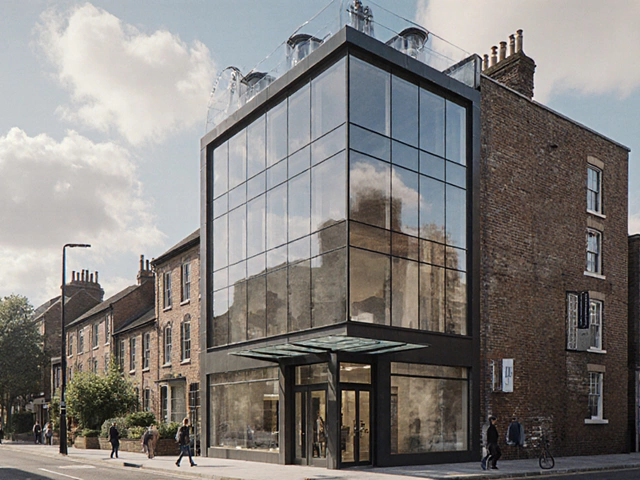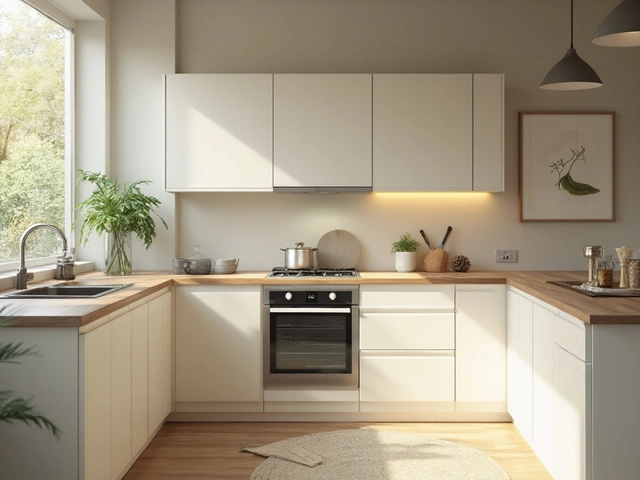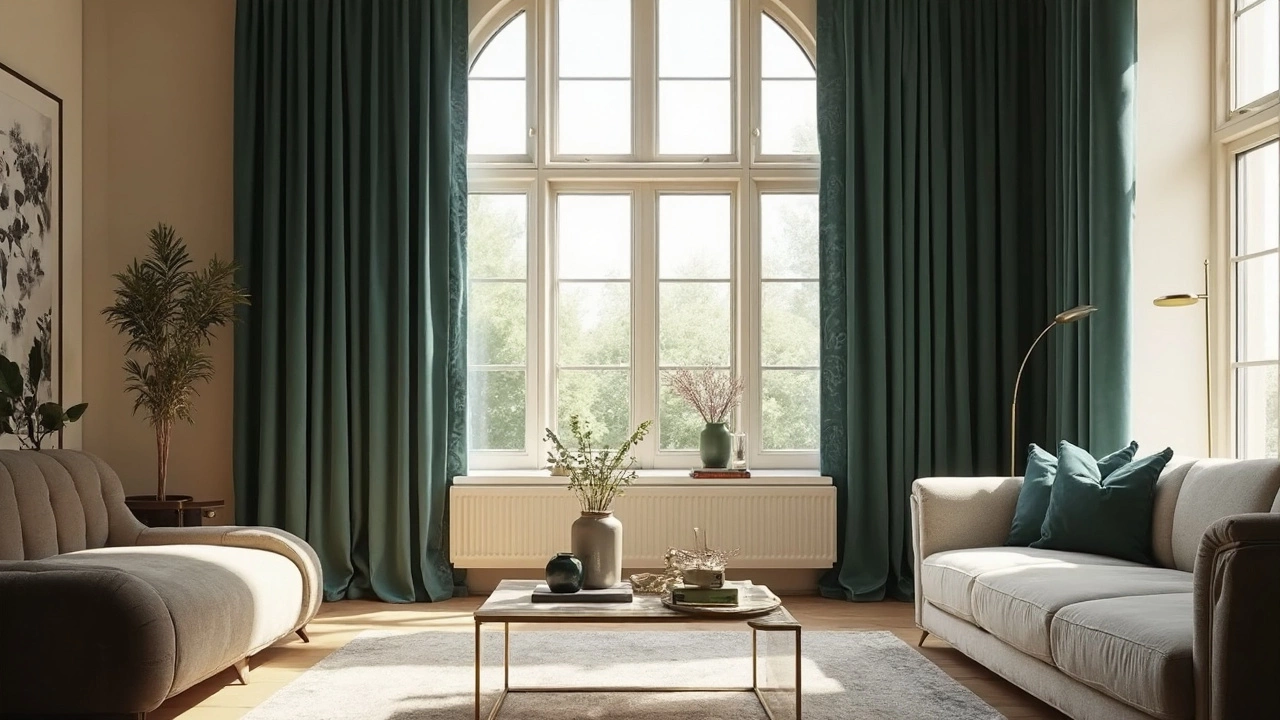
You walk into a stylish home, and it feels expensive—usually, the curtains are pulling a lot of weight. The fastest way to make a room look high-end? Get smart about your window game. Most people just buy the first set they see, but it pays to be a little picky.
Start with fabric. Cheap polyester just looks, well, cheap. If you want a luxe vibe, natural fabrics make a difference—think linen, velvet, silk, or heavy cotton. These hang better and catch light in a way that feels special. Even if you’re on a budget, there are good faux options out there that mimic expensive materials. Always check in-store—run your hand over the fabric. If it feels thin or plasticky, skip it.
Another thing people mess up: curtain length. Curtains that stop right at the window ledge drag a room down. Instead, get them long enough to graze or puddle lightly on the floor. This pulls the eye up, making the whole space look taller. Go even further and hang the rod a few inches above the window frame—tall curtains say "custom," not "off-the-shelf." You’ll be surprised what a simple change like this does for the room.
- Pick the Right Fabric
- Length and Layering Tricks
- Color and Patterns that Work
- Curtain Hardware Upgrades
- Simple Styling Hacks
Pick the Right Fabric
Fabric choice matters more than people think. The wrong material shouts "budget buy" while the right one can instantly elevate the whole room. If you want curtains that scream style and luxury, stick with these classics:
- Linen: Looks relaxed but still rich. It lets in light while adding texture. Linen doesn’t wrinkle as much as you think if it’s the heavier type.
- Velvet: Deep and thick, velvet draws eyes and keeps out drafts. It’s a favorite for blackout curtains in luxury hotels.
- Silk (or Faux Silk): The original high-end look. Real silk can be tricky because of sun damage, but lined faux silk looks nearly identical without the high price.
- Cotton: A sturdy pick for everyday use, especially the thick or lined kind. Avoid thin, see-through cotton as it looks cheap.
The most popular curtains for an expensive look use natural or heavy fabrics. A lot of designers say unlined curtains are a dead giveaway for low-budget windows. Lined curtains hang straighter, block light better, and feel more custom.
| Fabric | Pros | Cons |
|---|---|---|
| Linen | Light filtering, natural grain, high-end vibe | Can shrink, wrinkles over time |
| Velvet | Blackout, elegant, soft | Heavy, pricier, collects dust |
| Silk/Faux Silk | Shinier, dramatic, suits formal spaces | Needs lining, real silk is delicate |
| Cotton (heavy) | Washable, versatile, sturdy | Basic cotton looks cheap if it’s too thin |
If you’re looking for affordable options, stores like IKEA and Target now offer thick, pre-lined curtain panels that actually look good. Other smart moves include doubling up panels for a fuller look or lining thin curtains with a cheap blackout liner from Amazon. Making these small upgrades can fool anyone into thinking you splurged on custom drapes.
Length and Layering Tricks
Alright, here’s something most folks get wrong about curtains: the length. If you want your room to look expensive, avoid those short, stubby panels that end at the windowsill. The magic happens when curtains hit the floor—ideally, they should just kiss it or puddle slightly for a bit of drama. Hanging the rod five or even ten inches above the window is a little-known designer move. This makes your ceilings look way taller than they actually are, instantly boosting that high-end vibe. Even small apartments feel bigger with this simple change.
Layering is another pro hack to make a room feel polished. This means using more than one set of curtains. A sheer panel goes behind your heavier curtain, letting you control light but still feel private during the day. Put your opaque curtain on the outside for style and darkness. The trick is all about mixing textures and weights—think linen sheers paired with heavier velvet or blackout panels.
- Go for double curtain rods or use a track system if you want a clean, hotel-style finish.
- Keep your layers in a similar color family if you like a subtle, soft look. Want contrast? Pair crisp whites with deep, moody colors.
- Extra wide panels give a fuller look. Always buy curtains wider than your window for good gathers—no one likes thin, flat sheets pretending to be curtains.
Don’t overlook the width. If the curtain panel can barely cover the glass when closed, it looks cheap. A simple guideline: aim for panels two to three times the width of the window for that plush, rich feel.
Combining proper length, width, and layering is what separates a “meh” space from a room that looks like it belongs in a magazine. If you remember only one thing, it’s this: big, full-length, layered curtains are your shortcut to upscale style.
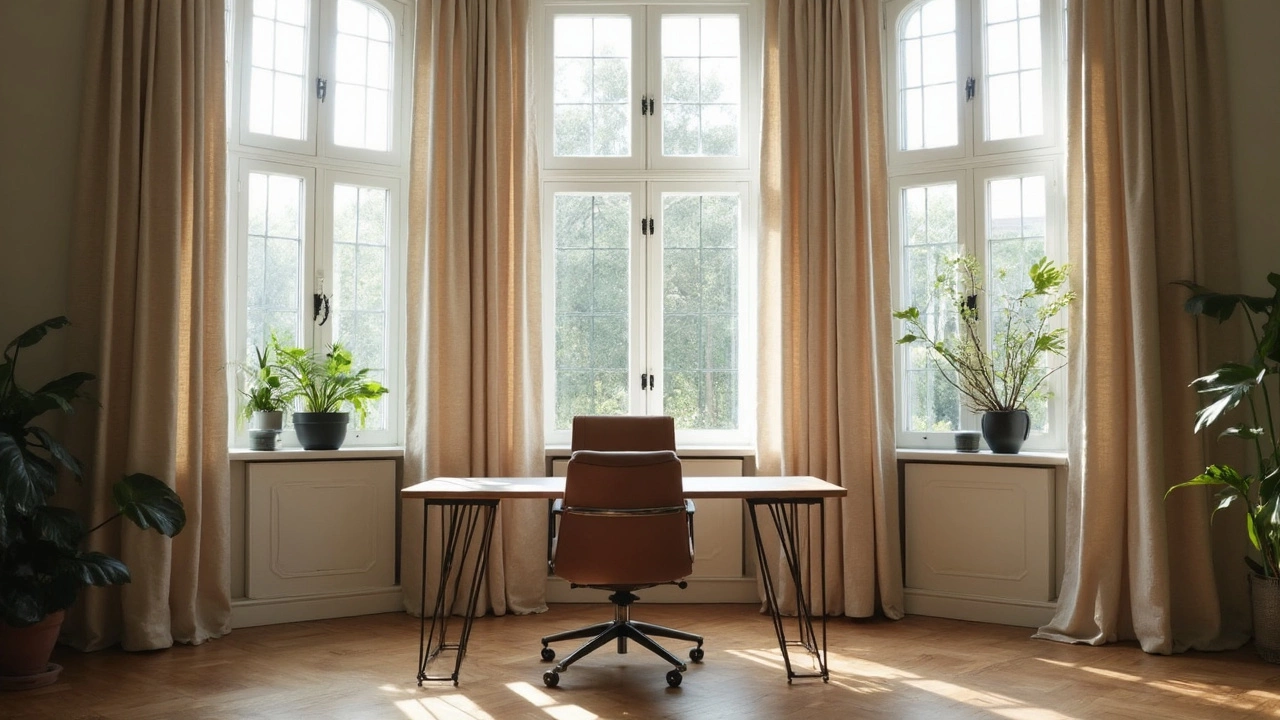
Color and Patterns that Work
Color can completely flip the feel of a room. If you’re after that finished, high-dollar look, pick curtain colors that feel timeless and work with everything else in your space. Neutral colors like ivory, beige, charcoal, and gray are favorites for a reason—they make rooms feel open and expensive. If you want a pop of color, think jewel tones like emerald, navy, or deep burgundy. These shades read rich but not loud.
Patterns are where a lot of people get tripped up. Big, bold prints can look fun, but they date quickly and usually don’t scream luxury. Instead, go for subtle patterns or textures. Think herringbone, tone-on-tone stripes, or a slight geometric. These don’t overwhelm the space but add some interest so your curtains look custom, not discount bin.
If you’re not sure what color or pattern to pick, here’s a quick cheat sheet of what always works:
- Curtains a shade darker or lighter than your wall color—creates depth without looking random.
- Sheer white or off-white for a fresh, hotel-style look—especially good for smaller rooms.
- Heavy velvet in navy, hunter green, or taupe for instant warmth and a moody vibe.
You can also look at what designers do in high-end homes. Most keep things simple and don’t mix three or four patterns in one space.
| Color | Works With | Vibe |
|---|---|---|
| Ivory | Almost anything | Fresh, open, bright |
| Charcoal/Grey | Modern spaces, neutrals | Chic, urban |
| Emerald/Deep Green | Wood tones, metallics | Rich, dramatic |
| Beige | Warm tones, boho or classic | Soft, welcoming |
| Navy | White trim, metallics | Polished, cozy |
Whatever you do, make sure all your curtains in one room match. Different colors or patterns in the same space make it look like an afterthought. If you want variety, play with textures or a slight pattern on some panels instead of mixing wild prints or colors everywhere. Consistency is what screams "designer."
Curtain Hardware Upgrades
Let’s be honest, most folks overlook curtain hardware when thinking about ways to make their room look expensive. But the hardware, like rods and rings, can actually make—or break—the vibe. For a look that screams custom (without the price tag), swap out those basic, skinny metal rods or plastic brackets. Instead, go for options with a bit of heft and finish—think matte black, brushed brass, or even acrylic rods for a modern twist.
It’s not just about what the rod is made of. The style matters. Decorative finials (those bits at the ends) add a finished polish. Sphere, geometric, crystal, or antique metal shapes can seriously step things up. Even mixing metals is a thing right now—as long as you keep the look intentional and not random.
Double curtain rods are a favorite move among interior designers. You can layer a sheer behind a main curtain, pulling in natural light without sacrificing privacy. This layering not only looks upscale but helps you control the mood in the room whenever you want.
Check out these common curtain hardware choices and why they work:
| Type | Pros | Best Room Fit |
|---|---|---|
| Brushed Brass Rod | Timeless, warm, pairs with almost any decor | Living rooms, bedrooms |
| Matte Black Rod | Sleek, modern, makes bold curtains pop | Offices, modern apartments |
| Acrylic Rod | Feels minimal, almost invisible, lets curtains shine | Small rooms, trendy spaces |
| Wood Rod | Warm, classic, adds texture | Traditional and rustic rooms |
Don’t forget curtain rings and hooks. They might seem small, but swapping to metal rings can upgrade basic panels in minutes. Eyelet or grommet curtains (where the rod slides through metal-rimmed holes) also look sharp—just a little detail like this puts your space miles ahead. If drilling into the wall is tricky or you’re renting, try tension rods in a nice finish—they’re easy to remove and won’t mess up the paint.
Upgrading curtains is only half the story. The right hardware makes everything look deliberate and legit—the whole point is that nothing should look like it came out of a "starter pack." Take a few minutes to consider the pieces holding up your curtains. That’s the type of detail people notice, even if they can’t put their finger on why the room looks just way better.
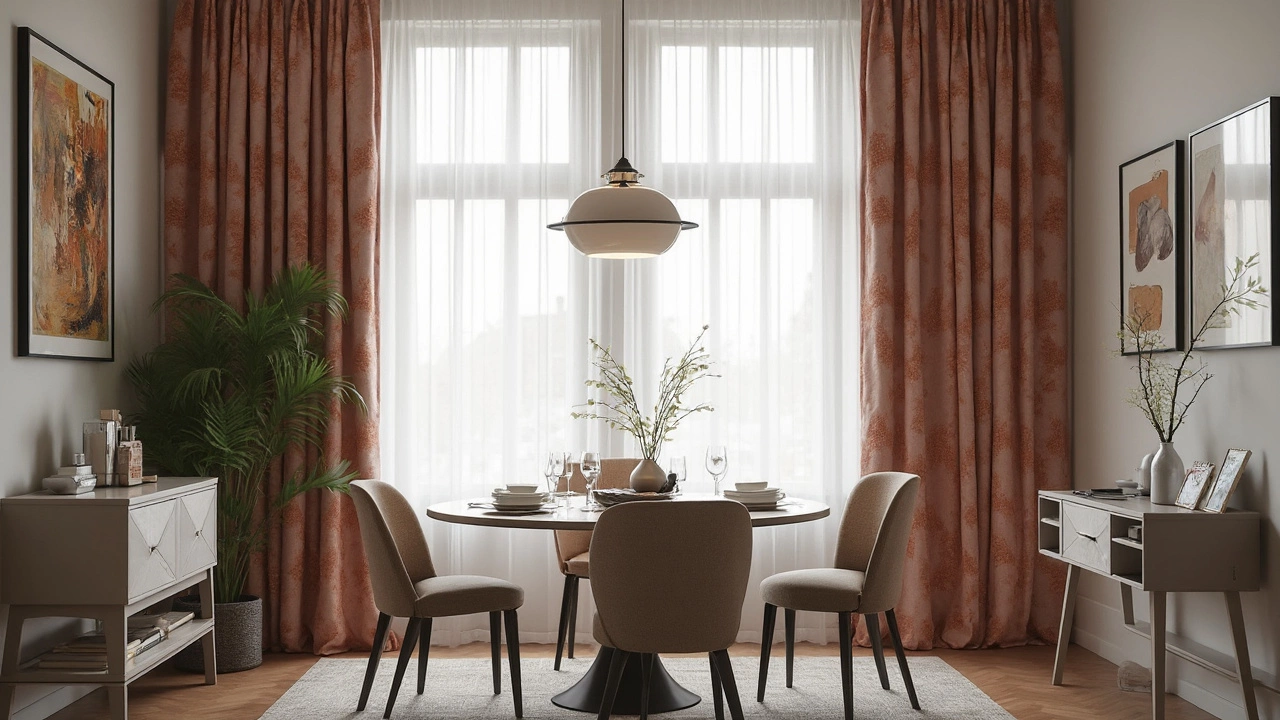
Simple Styling Hacks
You don’t have to be a pro designer to make your curtains look like a million bucks. People think the magic’s all in the fabric, but small styling tricks can totally change how your space feels. Here’s the inside scoop.
- Steam or iron your curtains before hanging them. No one talks about the power of crease-free panels, but nothing says "cheap" faster than wrinkled drapes. Big stores like IKEA even admit in FAQs that most customers forget this step and regret it.
- Let your curtains "break" at the floor. Instead of letting them sit awkwardly half an inch above, let them brush the floor or barely puddle for a more relaxed, high-end look.
- Double up the panels, even if your window is small. Wide, full panels look more expensive, and you don’t have to break the bank—just buy an extra set and bunch them together for that hotel vibe.
- Mount your rod wide past the window frame (at least six inches on each side). Your window will look bigger, and you’ll get more natural light when the curtains are open.
- Layer with sheers. Put a sheer panel behind your main curtains for depth. It’s a trick you’ll see in every fancy hotel and fast "shoppable" makeover online.
Here’s a quick table with some numbers to keep in mind when you’re making these changes:
| Styling Hack | Recommended Measurement/Tip |
|---|---|
| Rod Height | 4-6 inches above window frame |
| Rod Extension | 6-12 inches past each side of window |
| Curtain Length | Just brushing or puddling floor by 1-2 inches |
| Panel Fullness | 2-2.5 times width of window |
Don’t forget to highlight your curtains with good light. Open them wide during the day, and at night, a soft lamp nearby makes any fabric look richer. If the heading (the part at the top) looks sad or floppy, use curtain clips or pleat hooks to add shape—it’s a classic hack decorators always use behind the scenes.

